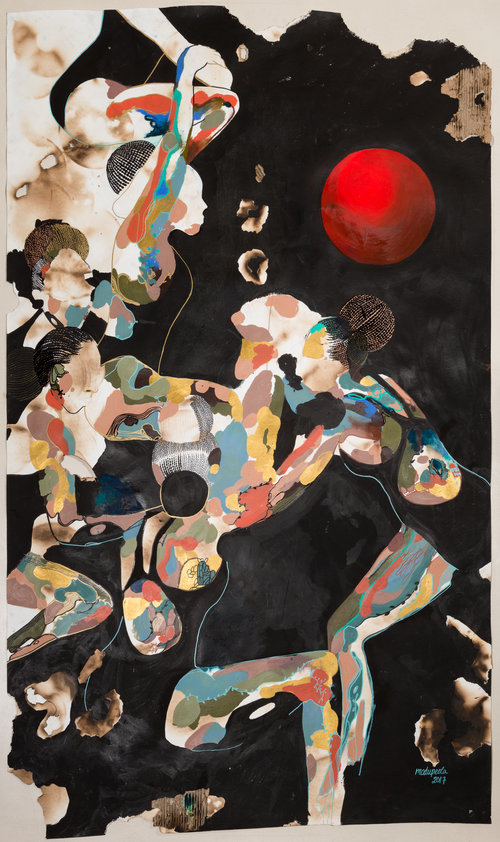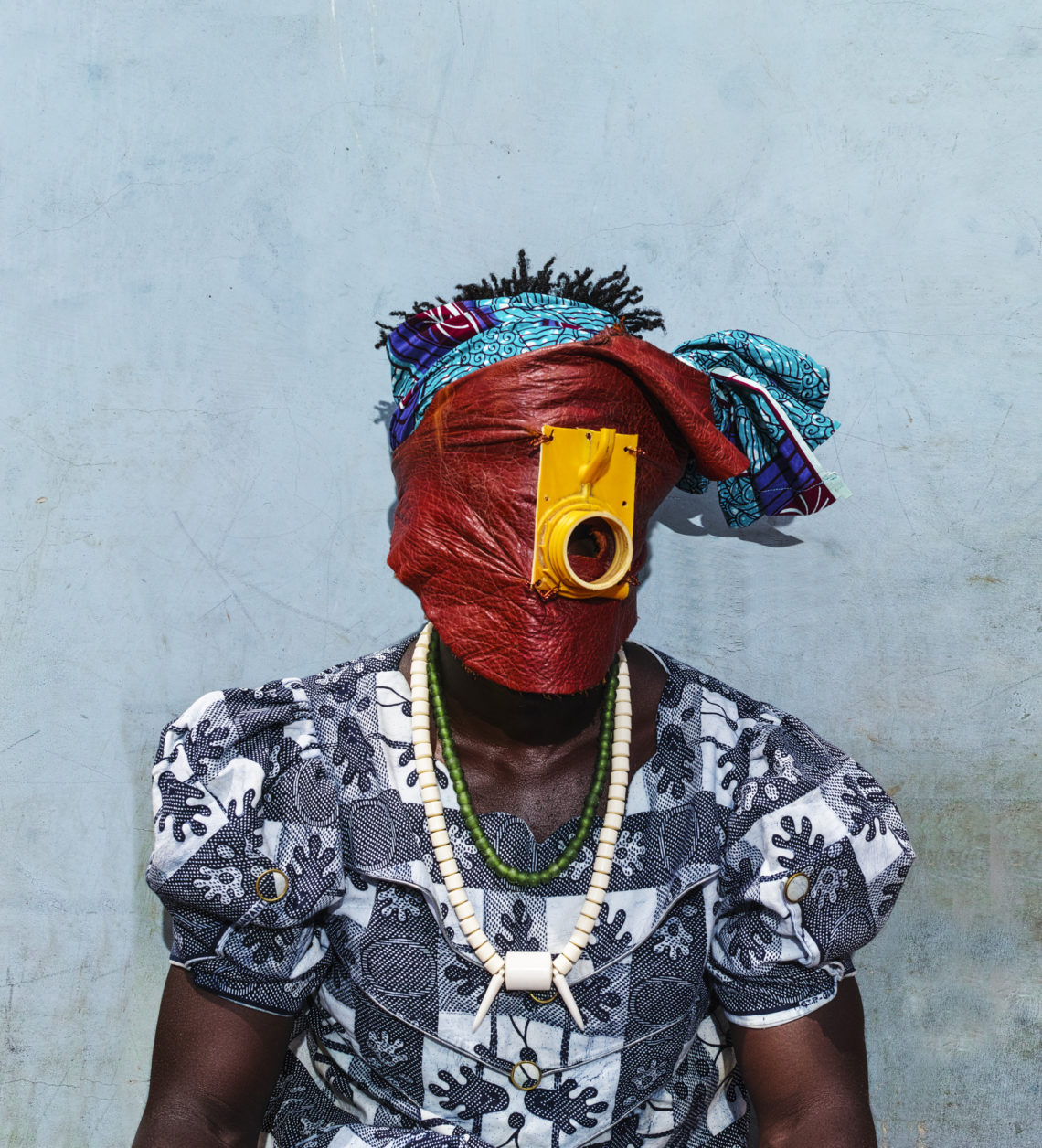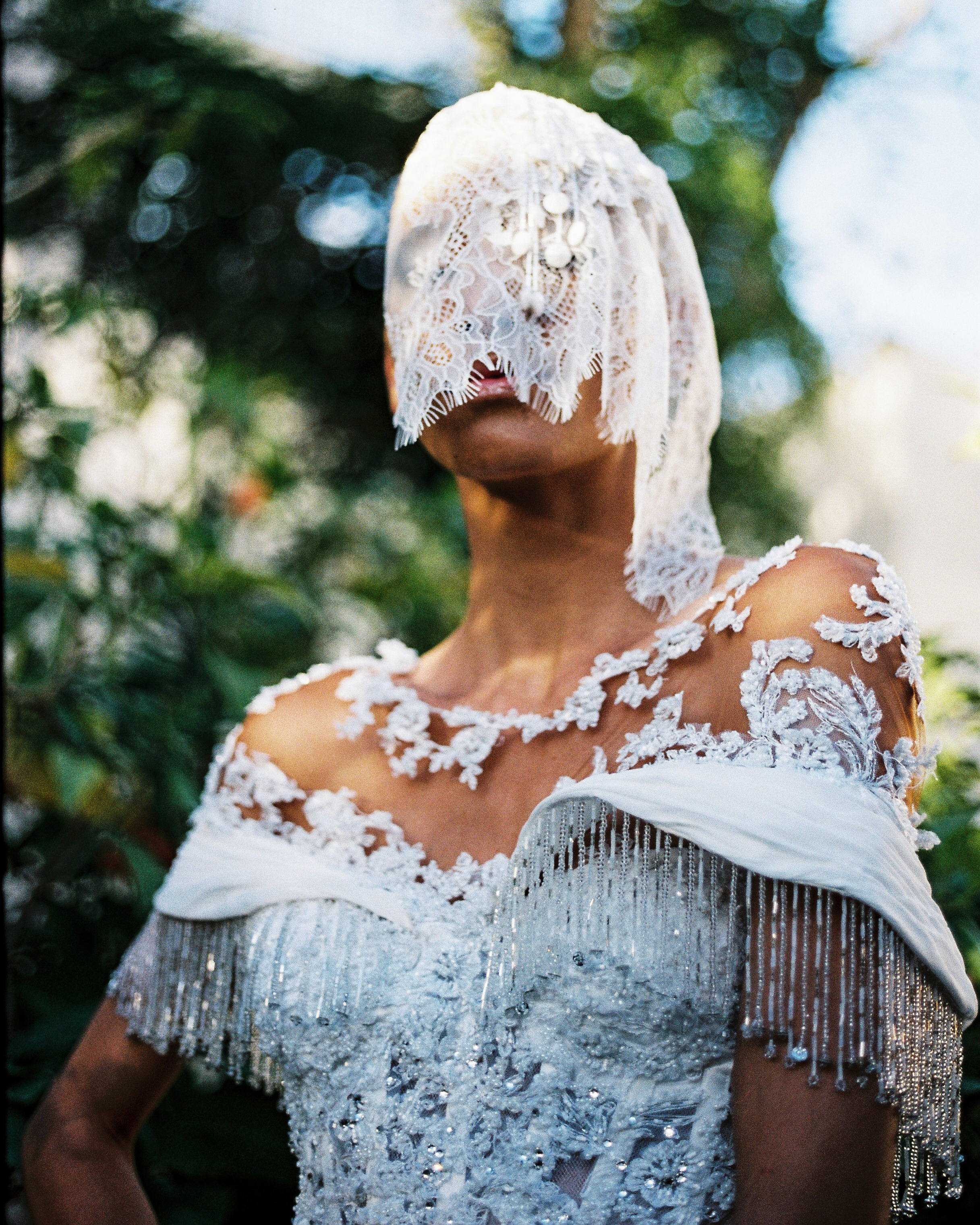A human body lies covered in what appears to be thick, solid pieces of cutout paper. The body is fully covered; barring from the knee down. The image has all the components that engender a sense of familiarity. However, something is off. One of the legs is twisted and both are lifted —suggesting that the body underneath is still breathing. This photograph (Laid, 2011) by artist Sam Vernon seems to say something significant and fateful about the body (particularly the black body) and its presence in the world.…it breathes intrigue into our imagination.
Vernon is a multi and interdisciplinary artist whose work explores the connection between memory, personal narrative and identity. “Through site-specific, staged installations and urgent performances my goals are towards the production of Gothic visual art in which Black narratives are included in the expanse of the genre,” Vernon states in an interview with African Digital Art.
Vernon goes beyond the confines of a single medium by combining drawings, paintings, photographs and sculptural components— transmuting their form from two dimensional to three dimensional works which become elastic and nonconforming. Her means of expression are constantly evolving as she continuously moves from illustrations, digital, performance and back.
Vernon’s digital prints, drawings and collages are typically black and white, perhaps an indication of an enhanced awareness of the past. The work is not always easy to process, and yet it remains vivid and clear. Through Vernon’s works, we travel through time towards the vast depth of her experiences. She describes an understanding of the past as a necessary means towards a better understanding of the self in the creation of the future.
Despite having a visual language that is difficult to pin down —with elements of abstraction, patterns and human-like figures —Vernon’s voice remains strong. This voice is further amplified by the specificity in the symbolism used to confront her subjects. “The active ‘ghosting‘ of an image, copying and multiplying the original, subtlety exploits the notion of a pure identification of black and white and signifies the essentialism of symbolic meaning and all its associations.”
Through her practice Vernon deconstructs and redefines narratives that inform memories and collective history through the lens of race and gender. Through her most recent show Rage Wave with G44: Centre for Contemporary Photography in Toronto, Vernon presented an ambitious exhibition bringing together images, photocopies, drawings and prints to reflect on post-coloniality, racial, sexual and historic memory. She has also presented works at Brooklyn Museum, Queens Museum, Fowler Museum at UCLA, Seattle Art Museum and the Museum of Contemporary African Diasporan Arts in Brooklyn, among many others.
Vernon’s work, with all its layers of complexity, remain a critical part of moving the conversation on black narratives forward. Her works have a sense of timelessness, where the past and the present seem to merge….perhaps because notions and conceptions of race and gender underpinning the work also have a sense of timelessness. Even as time passes, the trauma of the violent past continues to haunt.














 The striking film promotes her 2016 debut album
The striking film promotes her 2016 debut album  ‘Dreams’ was one of her earliest works, initially inspired by the rawness of first heartbreak. But as the years have passed, it has taken on new layers of meaning. For Msaki the video shifted the song’s lyrics from the explicitly personal to broader questions of ” who can dream? who can follow their dreams? Whose dreams can become real?”.
‘Dreams’ was one of her earliest works, initially inspired by the rawness of first heartbreak. But as the years have passed, it has taken on new layers of meaning. For Msaki the video shifted the song’s lyrics from the explicitly personal to broader questions of ” who can dream? who can follow their dreams? Whose dreams can become real?”. Working with no budget, but vast creativity, Francois set out to realise images themed around ancient myths of the Great Flood. Shot over three days, the video incorporated interested passers-by into the shoot and features additional performances by Dennis Webster, Mthwakazi, Akhona Zenande Namba and Nomthawelanga Ndoyko. The result is a beautiful and evocative meeting of sound and image.
Working with no budget, but vast creativity, Francois set out to realise images themed around ancient myths of the Great Flood. Shot over three days, the video incorporated interested passers-by into the shoot and features additional performances by Dennis Webster, Mthwakazi, Akhona Zenande Namba and Nomthawelanga Ndoyko. The result is a beautiful and evocative meeting of sound and image.























